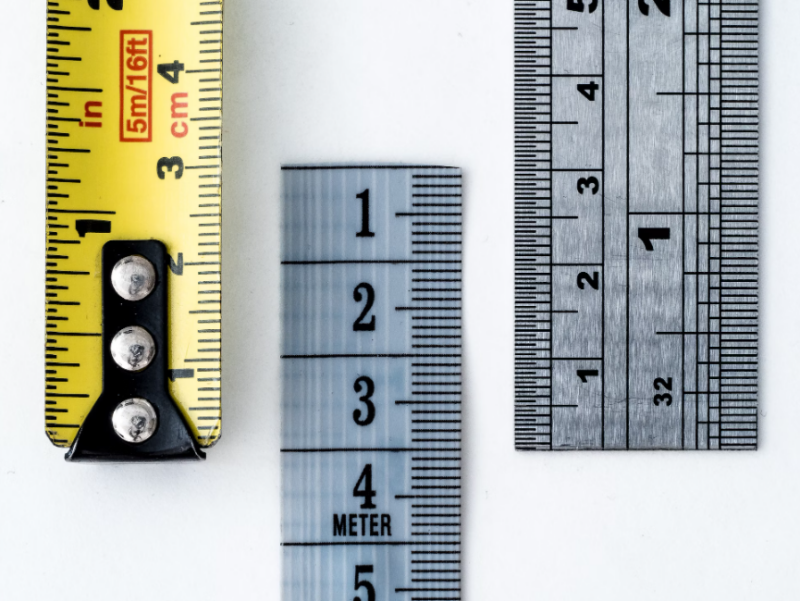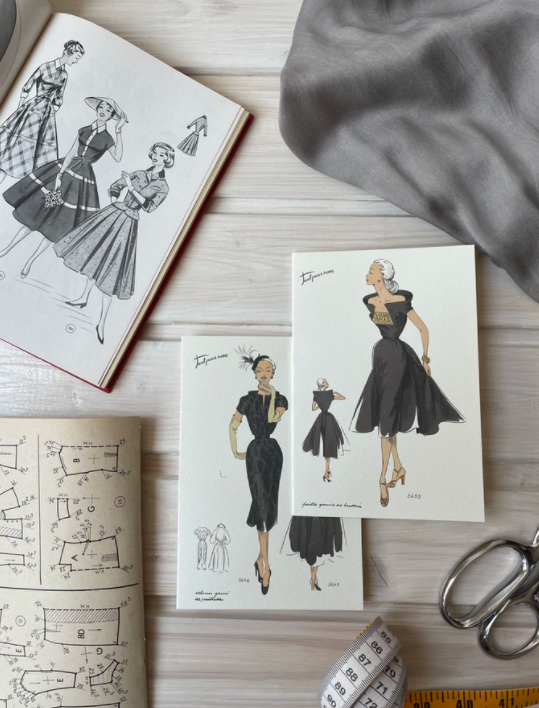Table of contents
Estimated readingtime: 4 minutes

How much interfacing do you need?
If you want to order interfacing, there are a few factors you should take into account. For example, the width of interfacing and interlining is not always the same. Most types of Vilene are 90cm wide. If you choose volume fleece, they are often 150cm wide. It is also important to consider which parts you are going to reinforce and how wide they are.
An example calculation for how much interfacing you need
Imagine you are making a jacket. You have a certain clothing size and the jacket is short. You want to use interlining on the facing and the front. There is also a collar that needs some reinforcement
To calculate how much interfacing you will use, first look at the width of the interlining. Most interfacings are 90cm wide, the stretch Vilene interlinings are 75cm wide and horsehair cloths are often 80cm wide. So checking first is not unnecessary

Then measure the length of the parts to be covered. I always use the length of the front as a base. My facings are usually the same length, especially on a jacket. Now measure the width of the front. If the width is not more than half the width of the interfacing, you can cut two front pieces from 1 time the height of your piece.
If your front part is wider, take twice the height of your front and place the facing piece next to it. That usually fits fine. Normally you need less interfacing with a smaller clothing size than with a larger size…
For small parts such as collars and cuffs, there is often a bit left over, but I still like a little more interlining. Take the amount for the front piece and facing and add half a metre, that is generally enough
Round the calculated number of meters of interfacing up to ensure you have enough for your project. You would undoubtedly rather have too much Vlieseline than too little.
Do you find it difficult to visualize it? Magazines such as Burda usually contain a diagram of how to place the pattern pieces on the fabric. You can do this in the same way with Vilene interlining, but you don’t have to cut out all the pieces.
Multiple types of interfacing needed in 1 garment

Imagine the jacket again, only now you are going to reinforce the front of it with horsehair and you want to add a yoke made of a super thin volume fleece because your fabric is very thin and falls flat.
Furthermore, you want the collar to stand up with an extra strong interfacing. Then your calculation is the same except that you get the different pieces from different types of interlining. So, how much interfacing you need is a little different…
How many metres shall I order?
If you choose a Vilene interlining that you use more often, it may be worth purchasing a few extra meters. In our shop you will find tier prices for all interlinings and vilenes. If you order a little more, the price will be a little less. How much interfacing do you need? More than you think… 😉
I have a favorite fusable interlining that I use at every opportunity. So yes, I have a little more stock of that one at home…
Choosing Vilene interlining
Choosing interfacing is not an exact science. That is why we have created a guideline for you: The Vilene interlining Choosing Aid. And haven’t you been able to decide yet? Then email, app or call Annette for advice!
These steps will help you calculate the amount of interfacing needed for your sewing project. Good luck!
